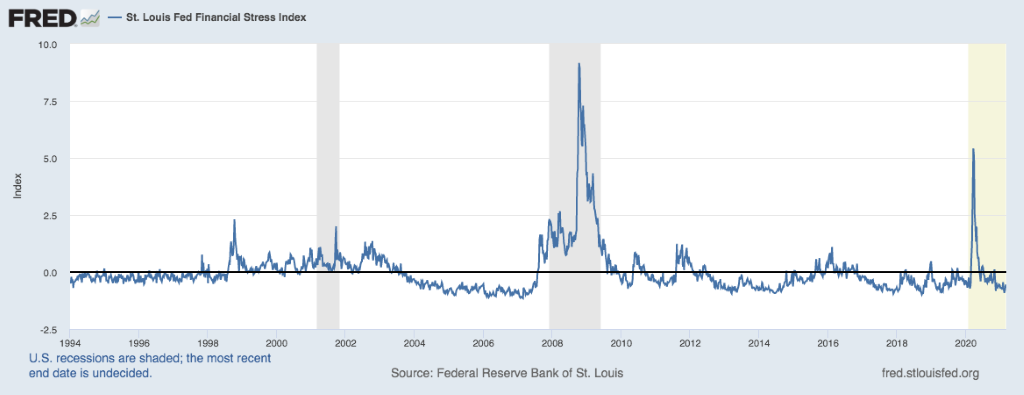by William Henderson, Vice President / Head of Investments
The markets posted a strong week with all three major averages gaining last week. For the week that ended March 12, 2021, the Dow Jones Industrial Average returned +4.1%, the S&P 500 Index gained +2.6%, hitting a new record, and the NASDAQ gained +3.1%. With last week’s positive returns included, year-to-date, each index stands well into positive territory. Year-to-date, the Dow Jones Industrial Average has returned +7.1%, the S&P 500 Index +5.0% and the NASDAQ +3.1%. The Dow and S&P 500 continue to diverge from the NASDAQ as value stocks shine a bit more than traditional growth stocks. Higher yields on U.S. Treasury bonds are also impacting growth stocks as they weigh heavily on price/earnings multiples – a gauge of equity valuations. These returns are indicative of a strong recovery as growth stocks, which are best represented by the NASDAQ, initially lead the market out of a recession; and value stocks, represented more closely by the Dow Jones Industrial Average, tend to accelerate once the recovery is well under way. Last week, the 10-year U.S. Treasury Note moved higher in yield by three basis points to 1.63%.
The latest $1.9 trillion stimulus package is in the books and direct deposits will be hitting consumer bank accounts as early as this week. The Federal Open Markets Committee (FOMC) under the leadership of Fed Chairman Jay Powell, holds it two-day meeting this week but there is no indication that Powell will lift the pedal off the monetary stimulus in the form of zero interest rates. Beyond stimulus, we are seeing the pace of COVID-19 vaccine distribution accelerate. As of last Friday, more than 100 million doses had been administered to Americans. President Biden is committed to May 1 as the date for states to make vaccine shots available to all Americans. It is getting harder for investors to bet against a very strong and sustained economic recovery throughout 2021. The economic recovery is evident in new sectors of the economy. Last week’s market winners included retailers such as Macy’s, L Brands, and Kohl’s, big airlines, and some of America’s stalwart manufacturers, including Boeing, Caterpillar, Ford, and GM. Several economists, including Cornerstone Macro, are predicting 9%-10% GDP growth in the second half of 2021.
According to the Federal Reserve Bank of St. Louis, the Financial Stress Index has moved well below pandemic levels. This Index is the weekly average of yields, credit spreads, interest rates and other financial indicators. A higher index level suggests severe market disruptions (see chart). The value was close to zero again, thus indicating a return to normal financial market conditions.

SOURCE: Federal Reserve Bank of St. Louis, St. Louis Fed Financial Stress Index [STLFSI2], retrieved from FRED, Federal Reserve Bank of St. Louis, March 13, 2021.
Everything seems in place for a mid-summer reopening of the economy and herd immunity reached nationwide around the same time. The markets clearly recognize that fact and are looking to continue EPS growth and a solid performance in 2021. Stock market corrections and repricing are common in long bull markets, but they are also indicative of a healthy market.
